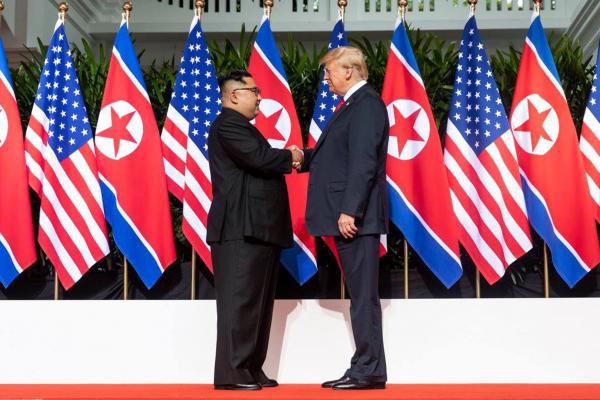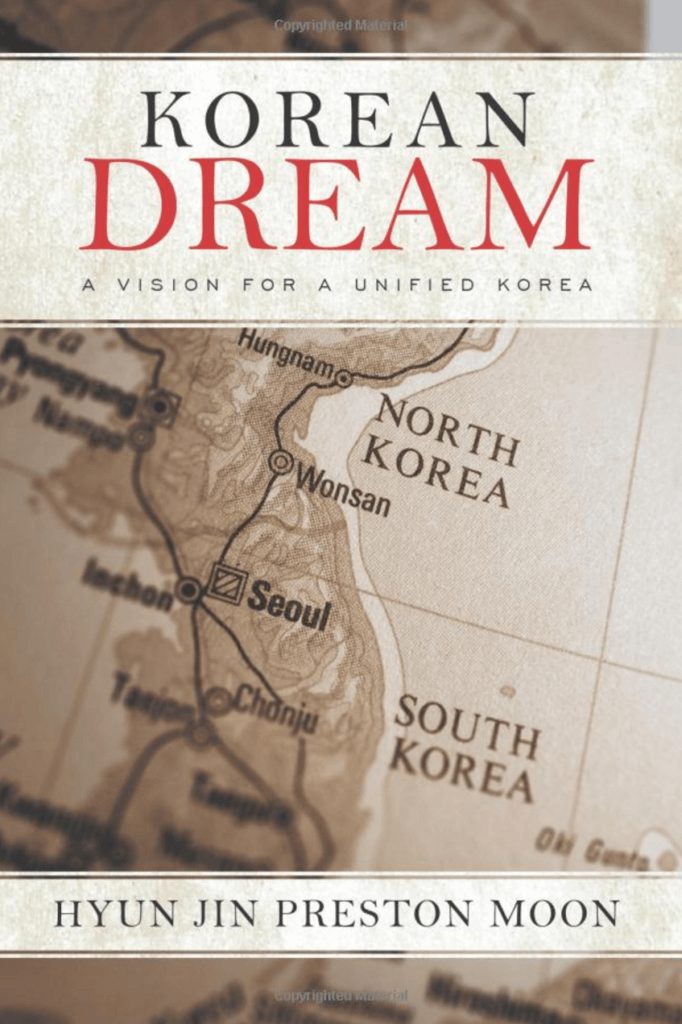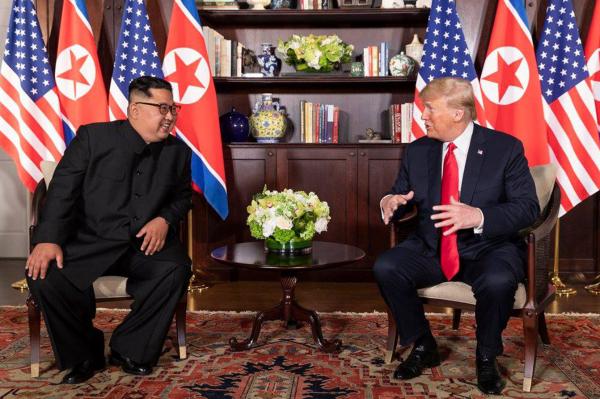The second meeting between U.S. President Donald Trump and North Korean leader Kim Jong un is scheduled for the end of February in Vietnam. President Trump has said, like the first summit, a central focus will be North Korean denuclearization.
Dr. Hyun Jin Preston Moon, a longtime leader in the work for Korean reunification, has urged U.S. policy makers to take a long-term perspective on Korean problem. Rather than denuclearization, Korean reunification should be the driving goal.
His recent editorial published by United Press International (UPI), offers critical perspective for the upcoming summit, and the March 1 1919 Korean Independence centennial that follows shortly after.
Pursuit of unification is only way out of North Korea impasse
by Hyun Jin Moon
 After a year of dramatic headlines and encouraging pronouncements, the Korean Peninsula stands again at a critical juncture. Current circumstances call for a thorough reassessment of U.S. strategy.
After a year of dramatic headlines and encouraging pronouncements, the Korean Peninsula stands again at a critical juncture. Current circumstances call for a thorough reassessment of U.S. strategy.
At the end of 2017, the world’s attention was riveted on North Korea. The Trump administration had made Korea its top international priority, galvanizing global support for biting sanctions that even included China and Russia. These were backed up by a credible U.S. military threat.
Kim Jong Un’s geopolitical inexperience had created a perfect storm of global condemnation. His expanding nuclear ambition, threatening the whole Pacific Rim, together with his purging of the pro-Chinese faction within North Korea, became the catalyst for former geopolitical rivals to come together to contain Kim. As a result, the North stood completely alone.
Kim was forced to take steps to defuse the situation. He declared his nuclear program completed and turned to South Korean President Moon Jae-in, who was anxious to reduce tensions on the peninsula. Moon saw an opportunity to act as a peace broker on the international stage and then pursue a Sunshine Policy 2.0 engagement with the North. With North Korea’s participation in the Pyeongchang Winter Olympics, the door was opened for the flurry of summits last year.
Yet global sanctions and U.S. pressure remained. With the North’s invitation and the urging of the South, the United States agreed to the Singapore summit, the first ever face-to-face meeting between the leaders of the United States and North Korea. This enhanced Kim’s prestige immensely. Once he stood utterly alone, yet with the help of the South Korean president, he got to meet with U.S. President Donald Trump, the man who had isolated his regime and nearly brought it to the brink of collapse.
Singapore changed all that. It enabled Kim to turn a potential crisis into a personal triumph. It also exposed flaws in U.S. policy toward the North. In return for an ill-defined promise of denuclearization, the United States was ready to offer the prospect of economic aid and thus enhance the survivability of the Kim regime. In so doing, the United States was overlooking the North’s atrocious human rights record and contradicting its own fundamental values.
The United States has insisted that North Korea will get no relief until it makes significant progress on denuclearization. But the damage has already been done. Through the impetus of the Singapore Summit, Kim restored relations with former allies China and Russia, meeting Xi Jinping four times and receiving Russian Foreign Minister Sergey Lavrov in Pyongyang.
As a result, the global sanctions regime has been significantly weakened. Given that and a diminished credible military threat, the probability for success of bilateral denuclearization talks is low. No serious Korea watcher believes that the North will give up its nuclear weapons. They are not only seen as a security guarantee, but more importantly are a source of national pride and independence that reaches beyond the regime.
Given this state of affairs, the United States should recalibrate its narrow bilateral approach. It needs a comprehensive strategic framework with clear outcomes in America’s national interest as it had after WWII with the Marshall Plan in Europe and Gen. Douglas MacArthur’s reconstruction of Japan. The only viable option is for U.S. policy to embrace peaceful reunification as a necessary strategic approach to denuclearizing the Korean Peninsula.
 The time is ripe for such an approach, as unification has once again been put on the table at the North-South summits. But it is essential to lay out clearly the principles upon which a unified Korea should be built. As I described in my book, Korean Dream: Vision for a Unified Korea, the starting point for reunification must be the Korean people’s aspiration to build an ideal nation, separate from the legacy of the Cold War. Unification must draw upon Korea’s shared cultural history that long predates the current division.
The time is ripe for such an approach, as unification has once again been put on the table at the North-South summits. But it is essential to lay out clearly the principles upon which a unified Korea should be built. As I described in my book, Korean Dream: Vision for a Unified Korea, the starting point for reunification must be the Korean people’s aspiration to build an ideal nation, separate from the legacy of the Cold War. Unification must draw upon Korea’s shared cultural history that long predates the current division.
At the heart of this history is the Hongik Ingan ethos — living for the greater benefit of humanity. It has always been a guiding principle in times of crisis and was a motivating ideal for the early 20th century Independence movement that sought to create a new and independent republic out of the ashes of the Chosun dynasty. Korean independence leaders in the United States recognized that Hongik Ingan resonates with the universal principles expressed in the U.S. Declaration of Independence. Their aspirations were linked to America’s founding ideals.
Unification must be more than the framework for policy. It requires a movement with broad popular support, widely promoted by civil society organizations. Such efforts are well underway. Since I launched and developed Action for Korea United in 2012, it has grown to include 1,000 member organizations building civic consensus across political, religious, and regional divides in support of peaceful reunification. It organizes community education programs on the Korean Dream approach throughout South Korea and the diaspora. It reaches out to youth through K-pop performances with unification themes.
Recent reflections on the presidency of the late statesman George H.W. Bush remind us of the dynamics around the fall of the Berlin Wall. President Bush worked behind the scenes in support of a grass-roots movement that led to German reunification in a way that established a major ally in Europe, at peace with its neighbors, and a bulwark against totalitarian aggression.
There are clear lessons for Korea that can be drawn here. One is the importance of a strategic policy that has a clear end goal in mind — unification. Another is to recognize and wisely support the popular movements that are vital for transformation.
A unified Korea should become the clearly stated and actively pursued policy of the United States and South Korea with the support of the community of nations. 2019 marks the centenary of the March 1 or Sam-Il movement, which proclaimed the Korean Declaration of Independence in peaceful mass demonstrations across Korea. We will remember the patriots such as my great-grand-uncle Yun Guk Moon, one of the 33 official signees of the Korean Declaration of Independence, who pioneered the path for national self-realization during the 20th century and planted the seeds for a new nation aligned to its founding mandate, “to serve all humanity.”
More than merely a celebration, this centenary can be a pivotal milestone that rekindles the spirit and determination of the independence movement toward national and regional transformation. With international support, the Korean people can finally fulfill their aspiration for a unified nation of high ideals, one that is a responsible partner in the community of nations.
This original story was published on February 4 by UPI.

